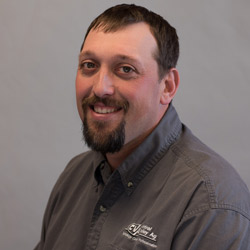Source: Central Valley Ag
I don’t know when planting season will start, but I do know that when it does, it will feel like we are going 100 mph. When we are in the tractor, with that planter hooked up behind us, we find ourselves in a state of conflict. We want to know that we are doing a good job, but a stopped planter doesn’t get anything done either. So, we rely on the monitor to our right to feed us information. Today, I want to remind everyone of the tools we have to our right, but also to our left.
The best planting monitors of today offer a lot of assurance about what is happening out the back of our planter. Notice that I used the term planter monitor and not display. While these two terms have been used interchangeably through the years, they are not. Some OEM monitors are displays that display planter information. For example, a Pro 700 gives you all of the pertinent information that you must know. For example, drive speed, population, section control, and high and low row information. That is all certainly important, but it does little to tell us more of the specifics about how the planter is performing.
What is far more useful and comes from a modern planter monitor is information about seed spacing, singulation, doubles, skips, downforce, and gauge wheel load on each and every row. More useful yet is when the monitor in your cab maps that information, so you don’t have to watch it like a hawk. Instead, you can pay attention to the other aspects of your planter, the field, and the fence. Then, you have a map to see if things are a bit askew when you can divert your attention.
But what the modern planter monitor, or specifically the Precision Planting 20/20 lets us do is go beyond the seed tube. We have talked before about the SmartFirmer, and some of its capabilities as a sensor, but for those that don’t remember, it allows us to see into the seed trench. Of course, its abilities to sense Organic Matter and CEC are useful, but some of the other pieces are incredibly important as well. The three things that it sees and tells you as you are in the field that you get on the go is if you are getting the furrow clean or dragging in trash, the soil temp you are planting into, and the soil moisture you are planting into. Gone are the days of asking what the right seeding depth are. If you are below 1.5” and have good moisture and soil temps, then you are in good shape. If not, make an adjustment.
But for as much as I would like this conversation today to be about convincing you to upgrade your planter monitor or add some SmartFirmers to your operation before planting starts, that may not be practical. So instead my call to action for you today is to reach left instead of right, and use the tool you have on that side of the cab. For those of you that are still wondering what I am talking about, it is the door latch. The most important thing you can do is get out and dig. It is essential whenever conditions change. And it does not happen often enough. We field far too many calls every spring where the operator is concerned about something they are seeing on their display. But when we ask, “Did you get out and dig?” it is often met by silence.
So for those of you that don’t have all of the latest and greatest tools on your planter to be your eyes from different angles, please get out and check things out a few times a day. Even if it is just five extra minutes after the planter is loaded, that’s a start. And for those of you that have all the latest and greatest, guess what, you still need to dig too, if for nothing more than confirmation of the sensors readings.
At the end of the day, if you have dug for 30 minutes each day, you should feel good and have some confidence in the job you are doing. If planting takes you ten days, then that is five hours you have added to your season. As my Grandma used to say, “If you don’t have time to do it right the first time, when will you find time to do it again?”



![[Technology Corner] Discussing AI’s Potential Impact on Service & Support](https://www.precisionfarmingdealer.com/ext/resources/2025/04/11/Discussing-AIs-Potential-Impact-on-Service--Support.png?height=290&t=1744385717&width=400)


